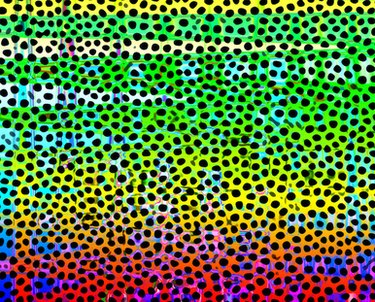Things You'll Need
Canvas
Paint brushes for acrylic paint
Acrylic paint
Palette
Container for clean water
Rag or paper towels

Most acrylic paints are thick and creamy and can be thinned to a watercolor-paint consistency or applied with a palette knife. This paint dries more quickly so that, unless using a retardant, the artist must work quickly to apply and blend paint to make one tone of color move smoothly onto another. This is the reason that blending acrylic paints on canvas takes a slightly different technique than using oils. Blending colors on canvas can be done physically or optically.
Blending Acrylic Paint on Canvas
Step 1

Apply different tones of a color next to one another on the canvas and while they're still wet, stroke the line between them with a damp, clean brush to smooth the transitions. For example, when painting an orange, the dark, medium and light shades of orange and white are applied in the right locations on the sketch and then blended to create a three-dimensional form.
Video of the Day
Step 2

Apply a darker shade of color in thin lines as you would with a pencil or pen to shade on paper. This early Renaissance method of crosshatching allows you to blend by applying darker shades of the hue gradually. Create shadow by first applying thin lines of a darker shade of the hue on top of the lighter tone, and build up the shadow by applying more lines crossing the first at angles, creating crosses in areas where you want darker tones.
Step 3

Stippling is another optical method that creates dark and shadow on a canvas. After covering the area with a light shade of the desired color, use a fine brush to stipple or lightly dab small dots of darker paint onto it. Apply dabs of the medium tone first, and then apply the dark tone of the color in the areas of the canvas that should be darkest. Both form and texture are created on the canvas this way.
Tip
Always keep your brushes clean when painting. Wipe the brush in between blending shades of a hue to prevent muddying the paint. You can't wipe away acrylic paint from the canvas the way you can with oils, but if you act quickly you can scrap and sponge off excess paint from the canvas and repaint the area.
Warning
Take your time when crosshatching or stippling. It's easy to make mistakes while you're rushing.
Video of the Day